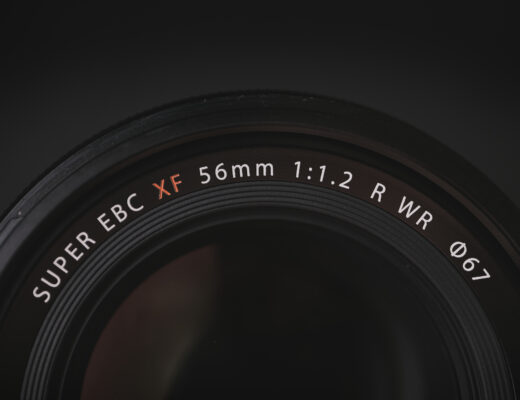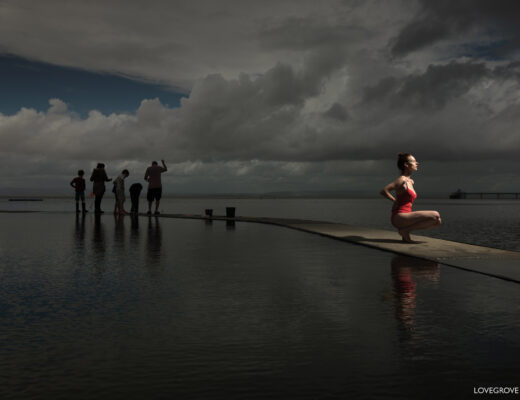Earlier this year, I had the opportunity to spend six weeks touring India. Traveling on crowded trains, cramped planes and taxis, I knew a roller bag full of full frame gear wasn’t very practical, but I wanted to bring a full kit. A friend suggested I look at the Fujifilm mirrorless cameras, so I did. I had been so immersed in the full frame, DSLR world, I was unfamiliar with the X series and after checking it out, I sold my Nikon gear and went all Fuji.
India would be a new kind of adventure, why not shake things up and make my photography an adventure as well? I’m a big proponent of the image over the gear and I’ll happily trade sensor size for a compact setup that allows me the opportunity to get the images I want, so I never once worried about going from a full frame sensor to the ASP-C of the Fujifilm mirrorless bodies. A year later and my gear has been around the globe, earning every nick and scratch. I’m really happy with it; it’s been the perfect travel companion and fits with the way I shoot.
When I pack for a trip, anything that’s mission critical stays with me while traveling from point to point. Battery charger, laptop, hard dive, memory cards… If losing it would prevent me from shooting, then it doesn’t leave my side. In my suitcase, I pack an extra battery charger, tools and spare parts like an extra rear lens cap or body caps.
This is what I pack in the 20L Peak Design Everyday backpack:
Bodies:
Fujifilm X-Pro2 with Lensmate soft release button
Fujifilm X-T2 with Lensmate soft release button
2-Peak Design Leash camera straps
5-Batteries
1-Kastar USB double battery charger
10-Memory cards
Lenses:
XF16mm-f/1.4
XF23mm-f/2
XF27mm-f/2.8
XF35mm-f/1.4
XF56mm-f/1.2
XF50-140mm-f/2.8
Accessories:
Manfrotto MeFoto tripod
Table top tripod
Bluetooth remote for my iPhone
Square Jellyfish tripod mount for my iPhone 7+
Cleaning supplies
Moleskine Cahier small notebook
Pens
Headlamp
Small flashlight
Allen wrenches
Image Processing:
13” Reconditioned MacBook Pro laptop & charger
Card readers
1TB LaCie Rugged hard drive “A-drive”
16G USB thumb drive
Power adapters
Personal Stuff:
Bose QC30 earbuds
Apple earbuds
iPhone and charger
Rhodia notebook
Karas Kustom copper fountain pen
Ink cartridges
G Lalo Stationary
Reading glasses
REI Double cable lock
Packed in My Suitcase:
Rear lens caps and body caps
Extra camera strap loops
Tripod mounting plates
Gaffer’s tape
Tools
Battery charger
1TB LaCie Rugged hard drive “B-drive”
6’ Extension cord
Lonely Planet Guidebook (for wherever I’m going)

I was in a cab outside of Aurangabad when the Muslim driver asked if we could stop, so he could pray at his mosque. We pulled over on a dirt road across the street from the mosque, which was perched atop an automotive repair shop. Everyone was staring at me, sitting in the car by myself, so I grabbed my camera and approached the shop. I asked if I could take their picture and was given a very stern, “No.” So I wandered around and then asked again. They said no, but brought me tea and a chair. After a bit, they got a couple of chairs and sat down. We drank tea, pantomimed and laughed at the awkwardness. I asked again if I could take their picture and the boss gave the OK.
A couple of thoughts on some of the items on my list. I have large hands and the soft release buttons really help. I think the shutter releases sits a little too flush for my big fingers. Reconditioned laptops are a great way to go for travel photography. They’re cheaper and they have the older USB ports, which is usually the standard where I travel. If I need a USB cable in Jaisalmer, India, I’ll have better luck finding a USB-A connector, than I would the latest USB-C. I pack my bodies without the straps attached, I use the straps to fill voids elsewhere in my bag and I also have two different colored straps, black and gray. It helps when both bodies are slung over the back of a chair or on the floor of a cab, I can tell which strap to grab. I pack my hard drives separately; if I lose either of my bags, I still have one of the drives. The 16G thumb drive is useful if I need to upload images from a computer that isn’t mine. I bring extra rear lens caps and extra body caps, I lost both once and it really impacted my ability to store my gear. If I’ve passed along a brand name it’s either a product I enjoy or one I’ve found useful, I don’t receive anything from the companies I’ve mentioned.
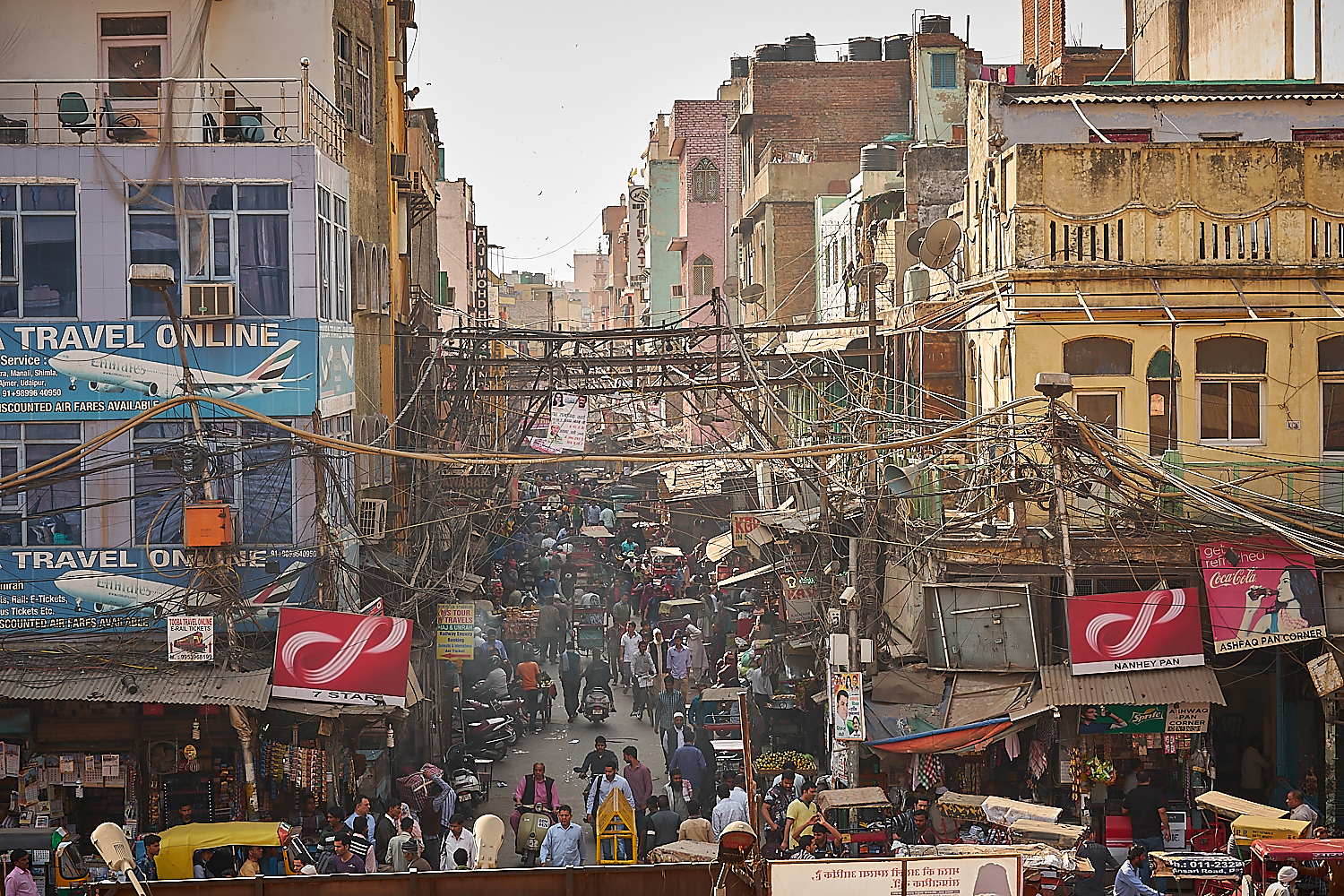
My first day in New Delhi, standing not he steps of Jama Masjid, I was blown away by the chaos of Candni Chowk.
When I get to wherever I’m going, I unpack the items on my Image Processing and Personal Stuff lists and set up shop. A lot of the places I’ve stayed don’t have a workspace, so the extension cord comes in handy when trying to make a desk out of a bed or chair. After removing all the things I don’t need to take pictures, I have room in my bag if I need to stash a body with a lens on it. Carrying two cameras tends to draw attention and I stick out enough already.
At the beginning of the trip, I make sure both bodies are set to the correct local time. I love the moment when I get into the setup menu and switch from Home to Local time, it feels like an adventure and I wait until I’ve touched down to switch. My travel ritual, telling myself I’m hours away from the usual. I’ve changed the file naming on my cameras to identify which body I used. It’s my first and last initial followed by XP or XT, KLXP or KLXT. After everything is unpacked and set up, it’s time to start taking pictures.
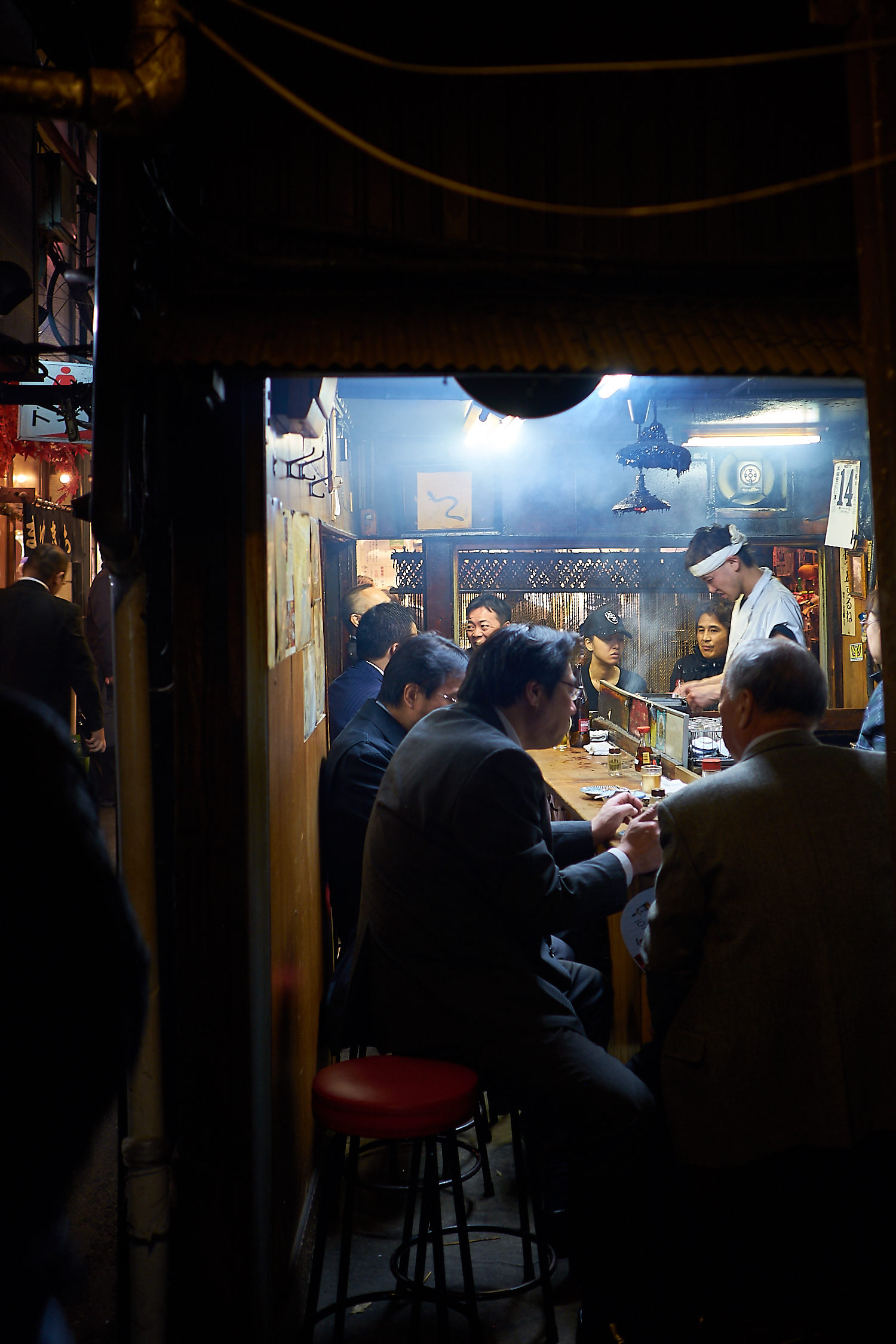
Wandering the back alleys of Omoide Yokocho in Shinjuku, I came upon the back door to this yakitori restaurant.
I have no technical reason why, but I tend to shoot with my XF23, XF27 or XF35 mounted on my X-Pro2 and the XF16, XF56 or XF50-140 mounted on my X-T2. I set up my camera bag so the lenses I like on my X-Pro2 are on one side and the lenses I like on my X-T2 are on the other.
As you may have noticed, I like prime lenses; they keep me moving and I feel more engaged with my surroundings. The size of the X-Pro2 and X-T2 allow me to get closer to people than I think I’d be able to with my D3 and a big 2.8 lens. When I pointed that big body and lens at someone, they were very aware of it. I feel like I interact more with people and my surroundings by sticking to the primes and zooming with my feet, but I’ll use my XF50-140 if I’m in a car or environment where I can’t move around. For some reason, I tend to use my X-Pro2 with people and my X-T2 for inanimate objects. I think it has to do with the viewfinder. The ability to switch from optical to electronic view in the X-Pro2 viewfinder is a feature I like. If I’m in a bustling bazaar, I’ll meter and compose in the EVF, then switch to the Optical viewfinder so I can see my surroundings, who is coming into frame, what’s going on around me, what’s about to happen. If I’m in a crowded space, I’ll put the pancake XF27 on my X-Pro2 for the least obtrusive setup, but most of the time I’m using my XF23 or XF35. For anything I’m shooting with a tripod I’ll use my X-T2, I love the flip out/up LCD screen. I’m tall and it allows me to look down instead of squatting to look through the viewfinder.
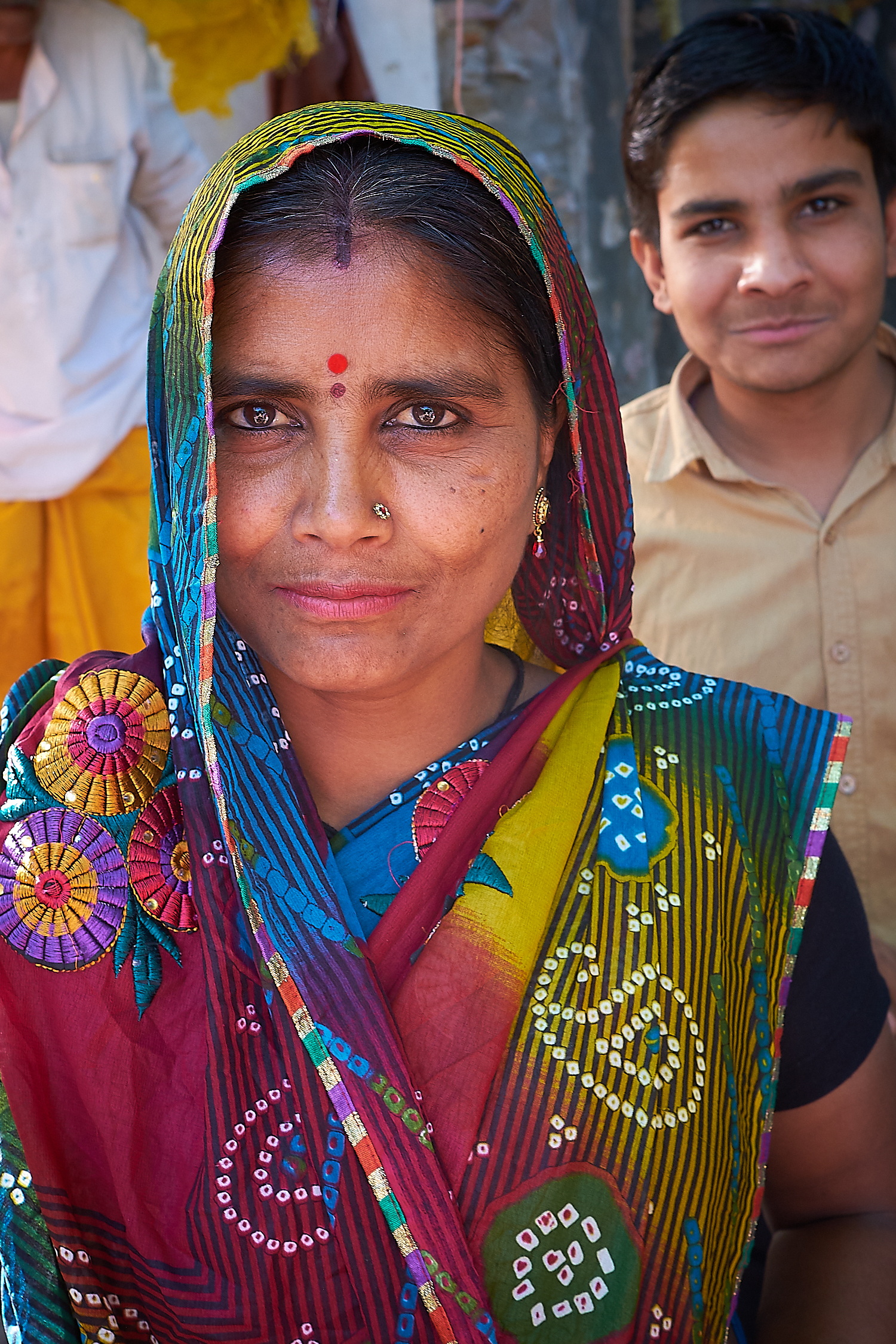
I was outside Amer in Rajasthan and was walking up a hill. This woman was with her family and they were staring at me as I approached, so I asked if I could take her picture. I thought she looked so pretty and dignified. I tried to get a family member’s info so I could give them a copy of her picture, but we couldn’t navigate the language barrier.
My camera setups are related to how I interact with people when I’m taking pictures. I’m a big white guy and I stick out in most of the world, so I’m not getting a lot of candid images. When I walk down the street in a remote Indian village, everyone sees me coming. They stop what they’re doing and stare, silently tracking my every move. I give them a few moments to size me up, then I smile and wave hello, that’s usually all it takes. I try to be respectful of their space and will usually spend a few minutes chatting or pantomiming before I take any pictures. Before I take someone’s picture, I’ll usually ask or hold up my camera as if I’m taking a picture. If they say no, I’ll thank them, put my camera down and continue to interact, asking again before I give up. Respect goes a long way and if they consent, then I start shooting and I usually continue until someone asks me to stop. I make sure I have a pocket full of small bills or change whenever I’m shooting. I’ll put a few bills in one pocket and if someone holds their hand out after I took their picture, I’m able to put some cash in it. I feel like it’s a small tradeoff and I try to remain cognizant that the camera I’m using to photograph them could feed their family for a year.
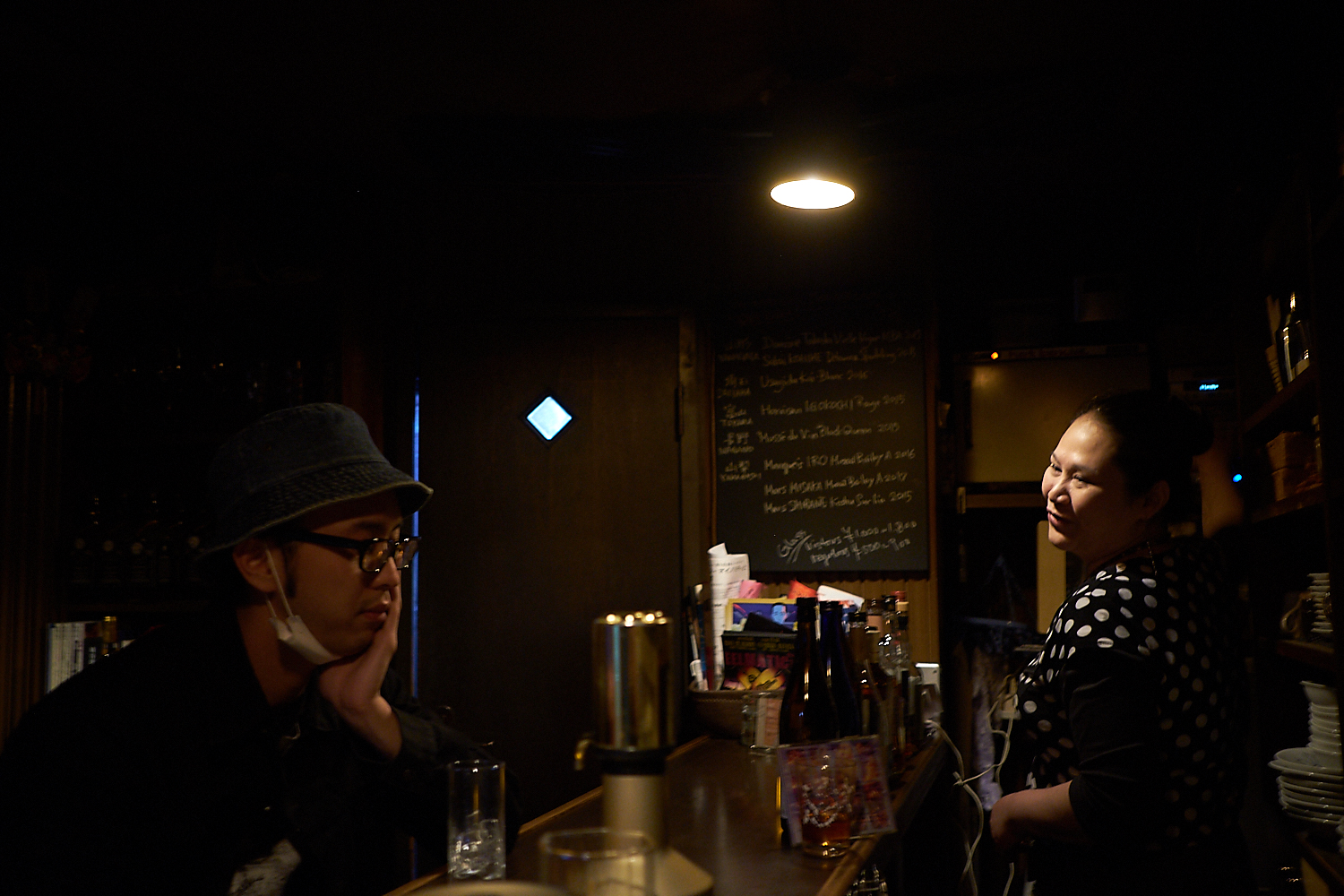
I was in a tiny bar in the Golden Gai and watched the bartender as she listened to him talk about his day. I wanted to capture her kindness.
At the end of the day, I have a few Automator workflows that I came up with to simplify file handling. I insert my card into the card reader and let the workflows takeover, moving files and opening Capture One and Carbon Copy. As soon as I import my images into the catalog on my “A” drive, I clone the “A” drive onto the “B” drive for a backup. Then I charge any dead batteries, format my cards and make sure my cameras are clean and set up for whatever adventure the next day holds.
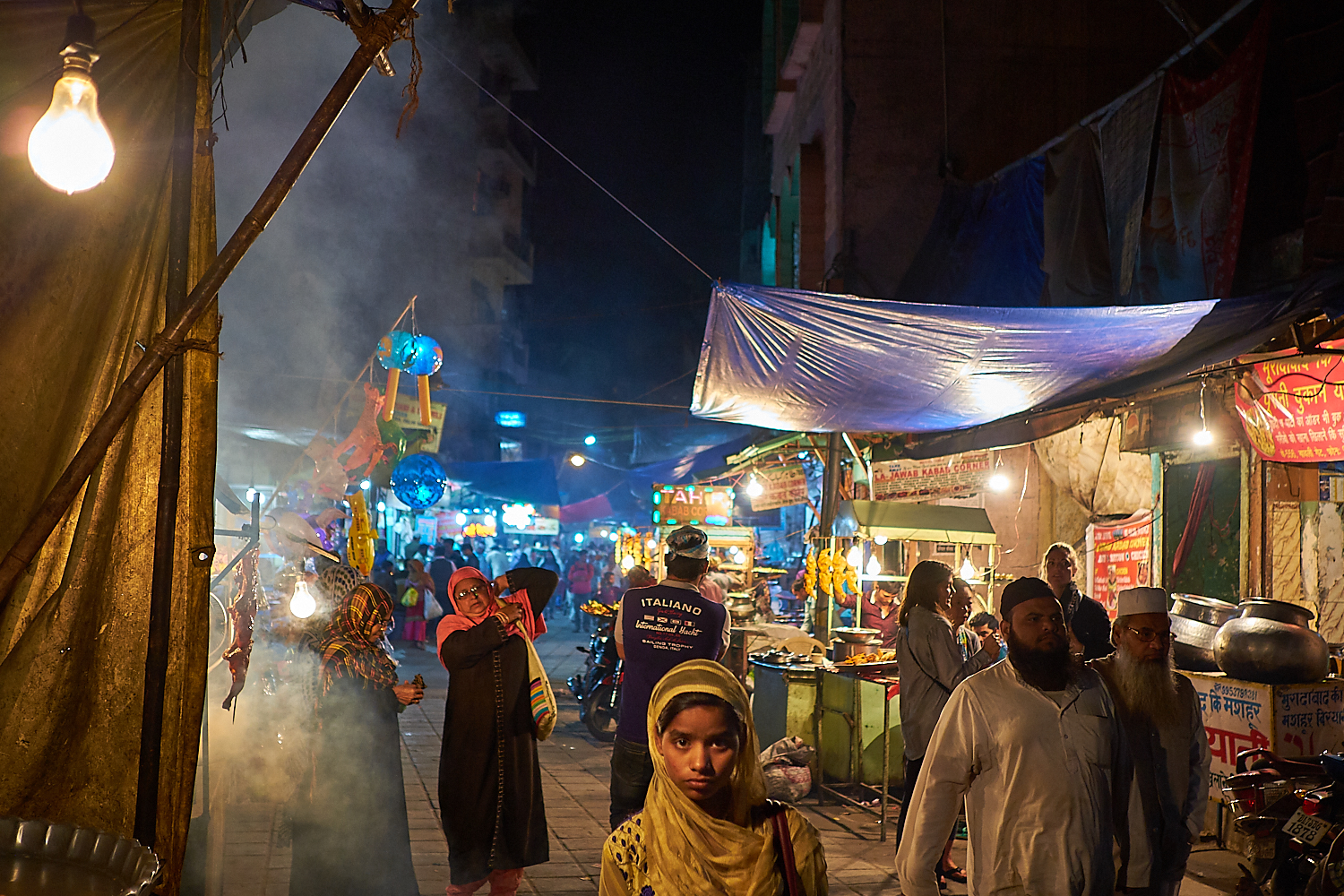
I was late and I was walking the Basti in New Delhi. The sights, smells and sounds were amazing, coming from every direction. This young woman was staring at me and I hoped she’d continue as she got closer. I liked her expressionless expression.




